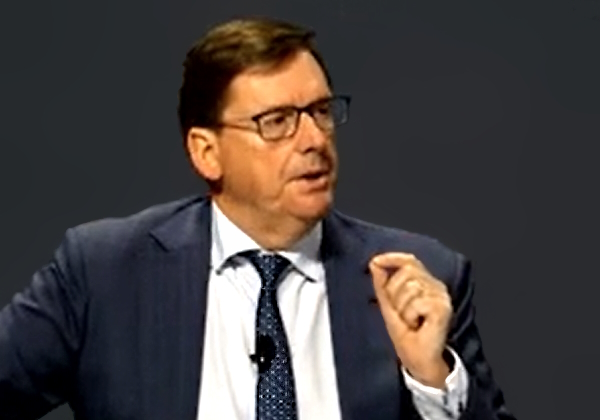
Westpac CFO Michael Rowland
Cash profit will cease to be an element of the financial reporting practice of Westpac, beginning with its March 2023 half year.
The net profit - the statutory net profit - will now be ‘the profit’ for the bank, as it always has been. It’s just that for more than 20 years all the big banks, and large companies in other industries, have promoted the concept of the cash profit as the key metric, the definition of which has fluctuated over the years.
The bank released an austere announcement on this revised approach via the ASX on Friday, one that minimised any rationale or context to this material shift in policy.
High-impact negotiation
masterclass
July 9 & 16, 2025
5:00pm - 8:30pm
This high-impact negotiation masterclass teaches practical strategies to help you succeed in challenging negotiations.
"Net profit is the single measure the group will use to assess overall financial performance," the bank said.
“Cash earnings specific sections [will be] removed.”
The bank employed this phrase more than 100 times in the bank’s 2022 annual report, and like its peers, cash profit has been a flawed centrepiece of the messaging and the investor presentations for too long now.
?Last year, the bank reported a net profit of A$5.69 billion, while cash earnings were $418 million lower at $5.28 billion.
"This change simplifies the financial reporting suite and provides greater transparency of performance," the bank said.
The whole package probably saves some decent money in the corporate centre. Remember, Westpac are pursuing extraordinary, if known to be unachievable, cost savings targets.
The bank said ASX and US results announcements "will be closely aligned." And why on earth have they not been aligned all these years? (And this is an endemic weakness in the industry).
The full year results announcement and annual report will be combined.
The group will continue to report notable items "that don’t reflect underlying business performance," the bank said.
In FY2022, Westpac included “remediation and litigation” as notable items. These are of course underlying business expenses and this expense line will once more prove to be not only florid, but disconcerting, and soon.
Presentation of the balance sheet “[will be] revised to improve disclosure,” with one material change disaggregating “loans” into housing loans, personal loans and business loans.
Radically recapitalising the balance sheet, Westpac’s board are leaving that drama for another day.
As the weakest and most troubled of the big four banks, Westpac is the bank most likely to need to do something drastic.
At the end of September 2022, Westpac had $70.5 billion in net assets supporting $1.014 trillion in assets. This was the first year the bank’s assets passed one trillion.
The bank included pro-forma tables to reflect related amendments to its reporting templates.
Including the leverage ratio in the annual report didn’t get a mention. The leverage ratio decreased to 5.6 per cent over the full year to September 2022, from 6.0 per cent a year before. This ratio fell further, to 5.5 per cent, in the December quarter.
This is unsustainable, and saddled already by low (sub-peer) growth, mainly in mortgages, Westpac will be dancing with near no growth as the recession takes hold.
You can only hope this proves to be the beginning of a badly needed reform movement.
It’s unusual for Westpac to be a first mover or leader in anything, so maybe good things are going on at the bank. Or weird ones, as John McFarlane, the chair and Peter King, the CEO, stage their exits this year.
Westpac will release its first results under the new format on 8th May.